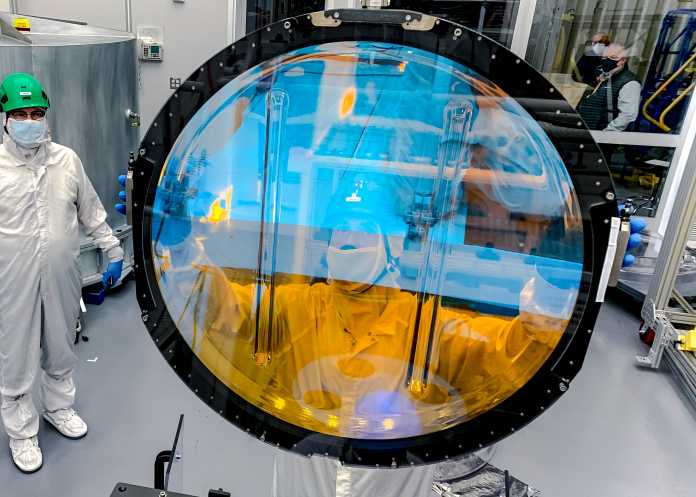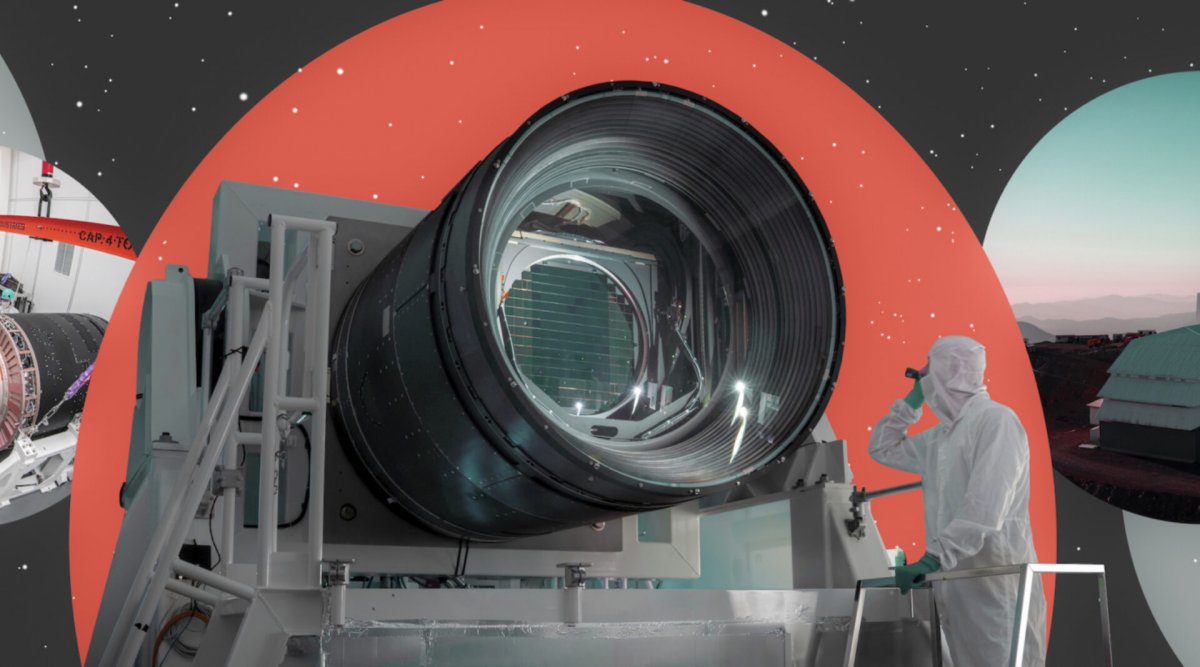The world's largest digital camera has been completed and will soon be shipped to Chile, where it will form the centerpiece of the Vera C. Rubin Observatory. This was announced by the National Accelerator Laboratory (SLAC) at Stanford University, where a camera called the Legacy Survey of Space and Time (LSST) was assembled. The research institute summarizes that the device, which weighs 3,000 kilograms and has a 1.57-meter lens, will be able to capture astronomical images with a resolution of 3,200 megapixels. Its sensing field consists of 201 individual CCD sensors (each 16-megapixel) and is designed so precisely that the surface is as flat as a tenth of a human hair.
advertisement
The Vera C. Rubin Observatory is located at an altitude of 2,647 meters on Cerro Pachón in northern Chile. It has a mirror with a diameter of 8.4 metres, and thanks to its special design, it has a particularly large field of view. This will benefit the giant digital camera, which will photograph the entire night sky repeatedly over three to four nights. Over the planned 10 years of operation, it will create the largest time lapse the universe has ever seen. According to operators, the mission will deliver 20 terabytes of image data every night. To view a camera recording at full resolution, it would take 378 4K monitors.
“The best movie ever”
Once the telescope begins operating in 2025, detailed data on the location of a large number of objects in the night sky will help measure so-called weak gravitational lensing. In doing so, galaxies bend light from objects behind them to a minimum. The researchers hope this will provide insight into the distribution of mass in the universe and how it has changed. This is supposed to reveal, among other things, how so-called dark energy drives the expansion of the universe. They also want to create the most accurate catalog of all objects in the solar system, map the Milky Way, and research dark matter. The goal of the time lapse created over time is to show what existed before after the supernova.
The completion of the enormous digital camera was now considered a “colossal achievement”, says SLAC President John Sarao. The instrument and observatory will soon open a new window on the universe and “provide profound insights into some of its greatest mysteries”: “We can’t wait to see what comes next.” Physicist Paul O'Connor explains that some people have been working on the project for 20 years. Many of the people involved stress how proud they are and talk about a pioneering project in astronomy. “We will soon produce the best film and most useful map of the night sky ever made,” promises the observatory’s director, Željko Ivečić.

(meh)

“Food practitioner. Bacon guru. Infuriatingly humble zombie enthusiast. Total student.”








More Stories
Kyiv: Russian Kursk offensive halted
US Presidential Election: Former US Government Officials Warn Against Donald Trump's Election
Netherlands wants to leave asylum system